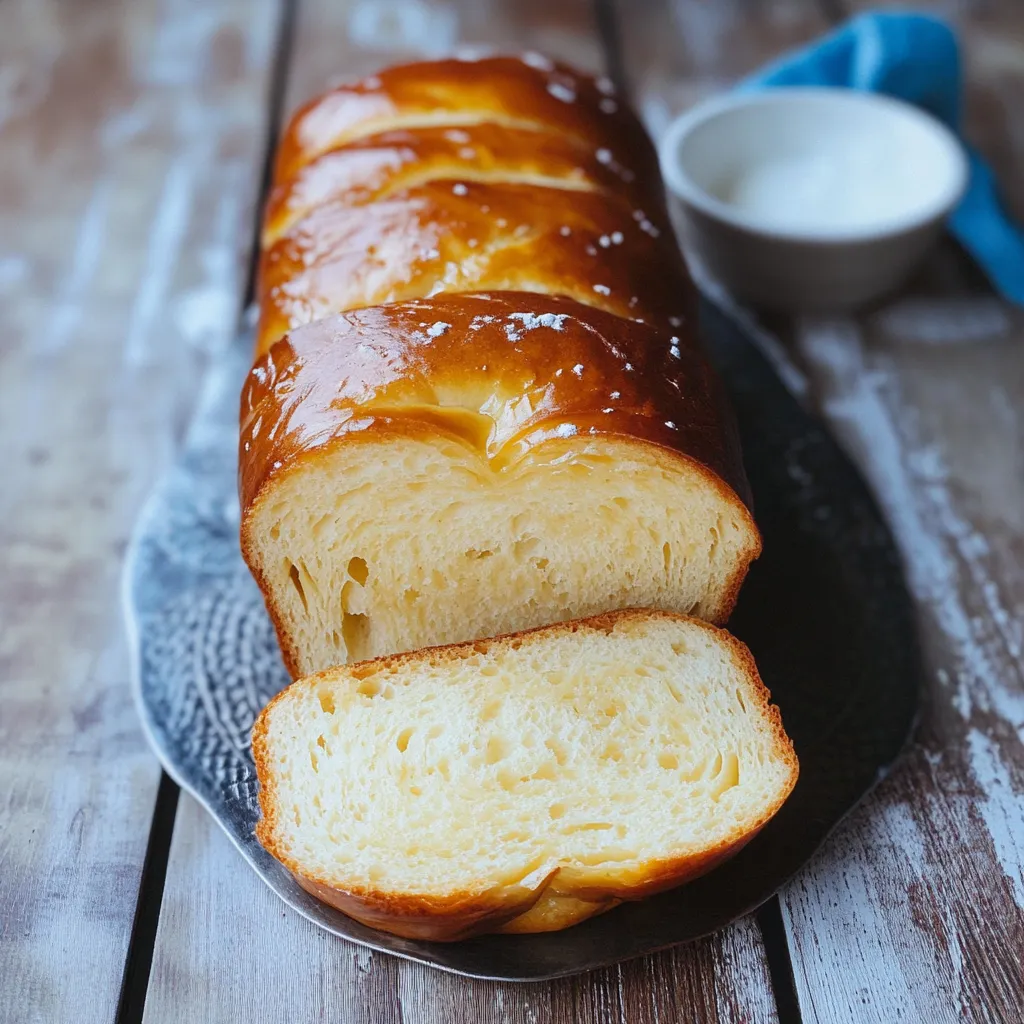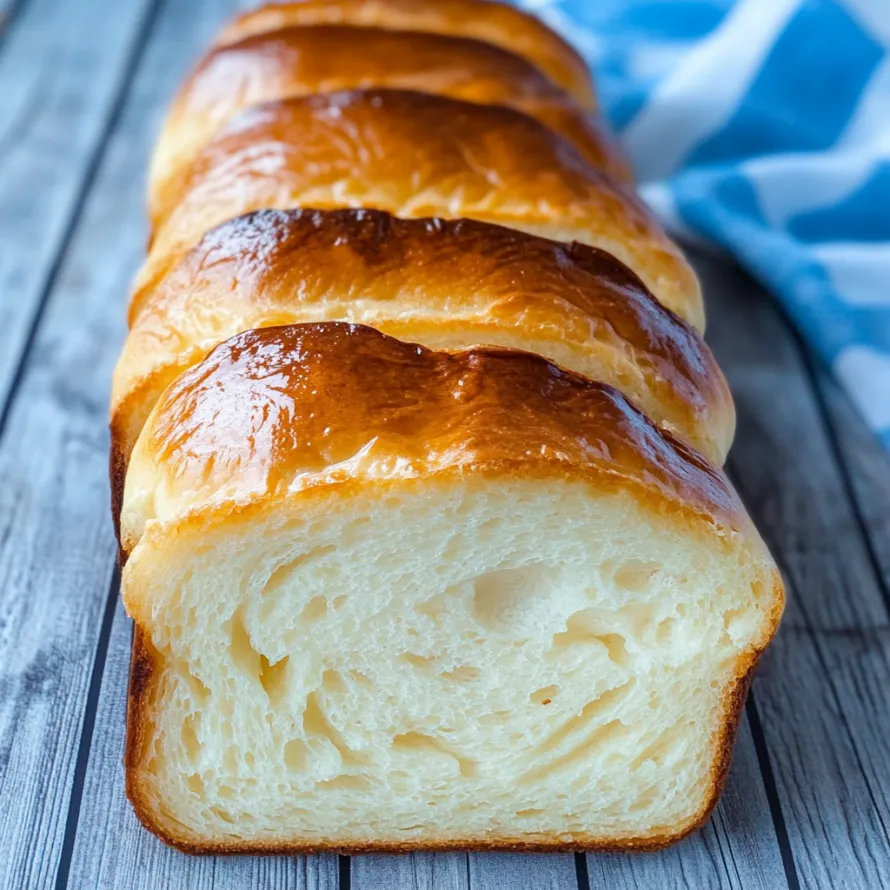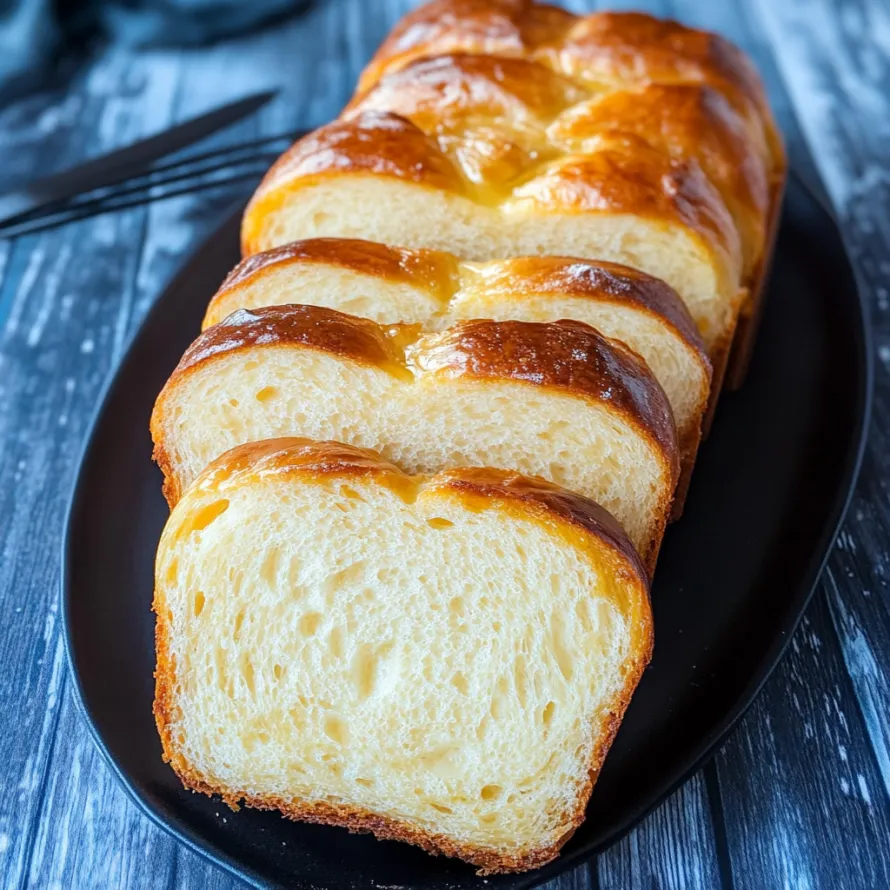 Pin it
Pin it
Condensed milk bread takes simple stuff you probably already have and turns it into a super soft loaf with just the right touch of sweetness that hangs around after each bite. Tear into the bread and you'll find super tender strands inside, all wrapped in a golden outside that's just crunchy enough for the best bite ever. It's perfect for everything, from regular sandwiches and morning toast to fancied-up tea sandwiches with friends.
I first tackled condensed milk bread on a stormy weekend, looking for something nicer than the usual but not too hard. As soon as I took the loaf out, the whole house smelled like warm caramel and everyone showed up asking for a slice. One bite of the fluffy inside and we all agreed—this would be our new favorite. It impresses guests but is easy enough that we can make it any week.
Essential Ingredient Picks
- Egg wash: Gives you that glossy look on top and helps sprinkles or seeds stick
- Instant yeast: Gets the bread to puff up every time and skips the step where you have to soak it first
- Unsalted butter: Brings out the rich flavor and lets you tweak the salt to your liking
- Whole milk: Makes sure your dough is moist and has enough fat to come together properly
- Cake flour: Makes the crumb tender, though you can use all purpose if that’s what you have (it’ll just be a bit different)
- Sweetened condensed milk: Packs in flavor, helps keep things moist, and makes the bread extra soft
Incredible Bread Making
- Baking Brilliance:
- Crack an egg into a bowl, add a spoonful of water, and beat until smooth. Carefully brush this on the risen dough with a soft brush, going gentle so you don’t squash it. Pop into that hot oven (350°F) for about 35 minutes and spin the pan halfway through so it browns evenly. The loaf’s ready when it sounds hollow if you tap under it, or hits 190°F inside on a quick thermometer check.
- Final Proof:
- Lightly drape the shaped dough with a damp towel or plastic wrap and leave it to sit somewhere warm. Give it 45 to 60 minutes to puff right up till it’s almost at the top of the pan. When you poke it softly, it should bounce back slowly. While you wait, have the oven heating so it’s good to go when the dough’s just right.
- Shaping the Loaf:
- Use flat hands to gently press out the air from your risen dough, then move it to a fresh workspace. Take a knife or dough scraper and split it into equal bits. Roll each bit into a ball, making the outside tight, then stretch them out to around eight inches long. Line all the dough pieces up in your greased pan, with the cut sides touching the edges so it looks cool after baking.
- First Dough Rest:
- Once you finish kneading, pull the edges of dough underneath to shape a ball that’s tight on the surface. Swirl it in an oiled bowl so all sides are a bit glossy and won’t dry out. Cover up (plastic wrap or a damp cloth works) and let the dough hang out in a cozy, no-draft spot for an hour or so—up to 90 minutes if it’s chilly. When you poke it, it should keep your finger’s dent after rising enough.
- Building Dough Strength:
- Move the barely-mixed dough to your floured counter or a stand mixer with a dough hook. Knead by pushing away from yourself, then folding back, repeating this for about ten minutes till it’s stretchy and smooth. Add softened butter in a few chunks, working each in before the next. The dough’s done when it can stretch super thin between your fingers without breaking (think “windowpane” thin).
- Mixing it Up:
- Start by heating milk until it’s just warm (about as warm as your finger, 100°F), which is perfect for waking up the yeast but not too hot. Pour condensed milk in and mix them together. In a different big bowl, mix sugar, cake flour, instant yeast, and salt, whisking till it’s all blended. Scoop a space in the middle and pour in your milk mix. Grab a wooden spoon and stir until you get a shaggy ball, catching most of the dry bits.
 Pin it
Pin it
The first time my grandma brought out condensed milk, she showed me how it could take something basic and turn it special—spreading it over toast or drizzling onto fruit. Because it wasn’t always easy to get growing up, she made every drop count. When I started working on this bread, I wanted to capture that magic, letting a simple can lift an everyday loaf without ever being too much.
Tasty Pairings
Cut a warm slice and layer it with tart berry sauce for a breakfast that pops with fruity tang against the sweetness. Or whip up dainty little sandwiches with cucumber and cream cheese for classic tea vibes. Toast thick wedges till crispy and add cinnamon butter for an easy dessert everyone will remember.
Fun Mix-Ins
Before your final loaf shaping, toss in some dried cranberries and grate in orange zest for a holiday version perfect with morning coffee. Try adding a spoonful of matcha powder with the dry stuff for subtle green tea taste and a pop of color. Or roll out the dough into small balls for single-serve buns—bake just 20 minutes and you’ve got handy, snackable pieces.
Keeping It Fresh
Once cooled, keep your bread sealed in a bag or container and it’ll stay tender on the counter for up to three days. If it starts to feel a bit stale, a quick visit (about five minutes) in a 300°F oven brings back the softness without drying it out. Always let the bread fully cool before stashing it so moisture doesn’t sneak in and make the crust soggy.
 Pin it
Pin it
Baking this condensed milk bread showed me that making bread is more than just following directions—it’s about making something that brings people together, smells amazing, and tastes like nothing store-bought can offer. Spending the time pays off with a kitchen that smells incredible and a crumb you just can’t get anywhere else. Whether you serve it to your family or friends, this bread always gets attention and disappears quickly. The gentle sweetness and springy texture prove how the simplest stuff can shine when treated right.
Frequently Asked Questions
- → Is it okay to swap cake flour for all-purpose?
- Totally! Just use 2 tablespoons less of AP flour per cup, then toss in 2 tablespoons of cornstarch for every cup to keep it tender.
- → How long will the bread stay soft and fresh?
- If you wrap it up tight and leave it in a cool, dry spot, you'll get about three days of soft bread.
- → What's up with two rising times?
- Letting the dough rise twice helps set up the soft structure and a great taste. The first rise makes it light, the second shapes the final texture.
- → Can I stash these rolls in the freezer?
- Yep, you can freeze them after baking. Wrap well with plastic then foil. Let thaw at room temp before enjoying.
- → How does the bread get so airy and soft?
- It's all the good stuff! Condensed milk, butter, and eggs make the dough super rich and pillowy. Condensed milk adds both sweetness and softness.
